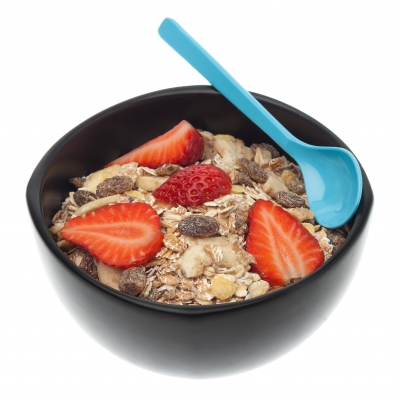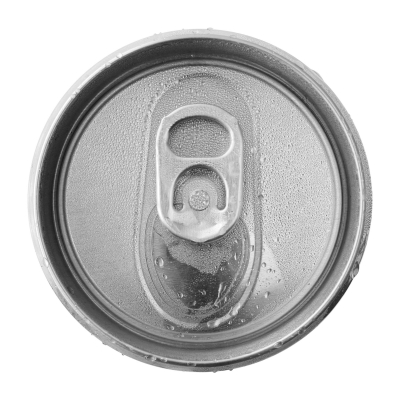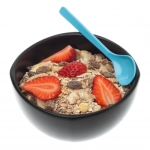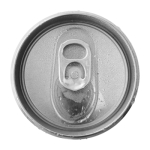Has laser eye surgery ever been linked to heart problems?

This guest post is provided by Phoebe Damien, content marketer who works in AcceleRank Web Solutions. A teacher by day and a blogger by night, Phoebe is helping businesses with content marketing. A blogger and a runner, Phoebe is also a vegan.
Few surgeries if any are completely safe, especially if you have some kind of heart problem. You might not even consider it as you lay down to get your eyes fixed, but is it possible that your laser eye surgery could cause you to suffer a heart attack?
Low risk but not entirely safe
Cataract and other types of eye surgeries are known to have very low risks of complications. This however does not mean that they are entirely safe. It is possible, although unlikely, that the stress of the laser eye surgery might lead the patient to suffering a heart attack. It is best for the patient to attend a consultation with a specialist.
Likewise, surgeons at Optilase will always do their best to screen the patients prior to the surgery in order to see if there are any risks to be considered. But even if they were able to find a problem with regards to the matter, there is nothing much that they can do in order to lower the risks of suffering a heart attack during the surgery. Here is a good thing about it though; these kinds of surgeries only require a local anaesthetic to numb the eyes – in fact it is not a very long procedure. Before patients undergo this kind of surgery, they will need to do routine testing before it is time to repair their eyesight.
Continue reading
25 Year Cardiology Study Links Prehypertension in Young Adults to Heart Problems Later in Life

Dr. Freeman shares what young adults can do now to prevent heart problems later in life.
What are the results of this 25 year cardiology study linking prehypertension in young adults and heart problems later in life?
Prehypertension can lead to adaptive changes that result in structural alterations in the cardiovascular system, including heart muscle structure, coronary vasculature, and conduction system of the heart over time. Structural changes eventually lead to functional changes resulting in disease: coronary artery disease, angina, myocardial infarction, cardiac arrhythmias, and congestive heart failure.
What does this study mean for young adults?
Continue reading
5 Healthy Summer Habits to Maintain this Fall
 Don’t let healthy summer habits fade away as you move into the fall. Fall often means shifting gears from summer activities into a more structured fall routine. How can you maintain healthy summer behaviors while stepping into fall?
Don’t let healthy summer habits fade away as you move into the fall. Fall often means shifting gears from summer activities into a more structured fall routine. How can you maintain healthy summer behaviors while stepping into fall?
#1 Complete Your Workout First
Summer is hot. You don’t want to be outside working out in hot mid-day temperatures, so you complete that workout early in the day to avoid the heat. Maintain this habit in the fall. By completing your workout first thing every day you are more likely to complete it versus waiting and having other priorities bump it off the to do list.
#2 Eat Breakfast Daily
More relaxed summer routines allow more time for a leisurely morning breakfast. Don’t push breakfast aside in the fall time crunch of getting kids out the door for school and yourself off to work. Breakfast “breaks the fast”, meaning it is the jump start your metabolism needs daily.
Continue reading
Farmers Markets to Lower Blood Pressure with the DASH Diet

This Dietary Approaches to Stop Hypertension (DASH) diet is recommend to manage high blood pressure. This diet is rich in fruits and vegetables. You need to consume between three to five servings of vegetables daily and between four to five fruits daily. That likely sounds overwhelming, but it can be effective in your efforts to lower blood pressure.
One vegetables serving is equal to 1 cup raw leafy green vegetable, ½ cup cut-up raw or cooked vegetables, or ½ cup vegetable juice.
One fruit serving is equal to 1 medium fruit, ¼ cup dried fruit, ½ cup fresh, frozen, or canned fruit, or ½ cup 100% fruit juice.
It’s the perfect time of year to adopt the DASH diet if you are struggling with high blood pressure. Many varieties of produce are in season and farmers markets are readily available.
3 Benefits of Shopping at Farmers Markets
- Farmers markets are environmentally friendly. The food is produced and sold locally, while food in grocery stores travels an average of 1500 miles before it reaches your plate.
- Produce grown for farmers markets is typically allowed to fully ripen naturally before it is harvested. Nothing is used to speed up the ripening process.
- The produce purchased at a farmers market comes straight from the garden. No processing. This equals fresh and nutrient rich food.
Tips for Shopping at Farmers Markets
Shopping at a farmers market is not the same as going to the grocery store.
Continue reading
Moms and dads: Are your children getting enough fiber?
 From keeping our immune system functioning to bowel regularity, our digestive systems do a lot for our everyday health.
From keeping our immune system functioning to bowel regularity, our digestive systems do a lot for our everyday health.
Dietary fiber as a regular part of your diet will promote lower cholesterol levels and improved heart health. Most of us consume about half of the fiber our bodies need to function correctly.
If we include fiber in the diets of our children now, we can make it a natural habit they continue into adulthood.
I asked registered dietitian Felicia D. Stoler, DCN, how parents can get inventive about ways to increase our family’s fiber intake. Stoler is the former host of TLC’s “Honey, We’re Killing the Kids,” and author of “Living Skinny in Fat Genes.”
Lisa Nelson, RD: How much fiber do we need?
Dr. Stoler: “Toddlers ages 1-3 need 19 grams of fiber daily. Children ages 4-8 years need 25 grams, about the same as adult women. Teenage boys and adult men should aim for 38 grams per day. That fiber requirement probably won’t be met by eating fast food. “A four-piece serving of chicken nuggets has just one gram of fiber. A six-inch turkey breast deli sandwich only has three grams.”
Lisa Nelson, RD: How do you get around the idea that a high-fiber diet means piling plates high with vegetables?
Dr. Stoler: “Sometimes playing ‘hide the fiber’ is the best way to improve a family’s nutrition.”
Lisa Nelson, RD: Can you give me some examples?
Dr. Stoler: “I’m always tossing ground flax seed into foods. One of my favorite tips is to use it as a thickener for tomato sauce or soup. Serving a lot of side dishes is a great way to load up on vegetables or grain-based foods. Along with a main course of poultry or fish, I prepare a lot of side dishes with beans, lentils and multiple grains. For flavor and color this time of year, toss in some cranberries.”
Lisa Nelson, RD: What about giving the family a high-quality fiber supplement?
Dr. Stoler: “I keep Sunfiber on the kitchen counter so it’s very convenient while I’m cooking. Since it’s odorless, tasteless and mixes easily into just about anything, it’s routinely my secret ingredient in a lot of foods from pancakes, waffles and muffins to chili, soup and yogurt. One scoop adds six grams of fiber, which is significant. It also helps support your family’s bone health because it supports better calcium and magnesium absorption.”
Lisa Nelson, RD: How can you add more fiber to kids’ party foods, especially if the event is at someone else’s home?
Dr. Stoler: “Offer to bring a snack for fall get-togethers. Kids go crazy for fruit kabobs. Just thread fresh melon balls onto wooden skewers. Then flip over half of the empty melon shell, and stick the skewers into it for a festive presentation. If you’re short on time, buy the pre-cut melon and stick the skewers in a Styrofoam ball from the craft store or invert a colander. When fruit is presented in an enticing way, people want to eat it.”
Lisa Nelson, RD: Do you have other creative tricks for getting kids to eat healthier?
Dr. Stoler: “Make sure plates are filled with colorful foods. Food that’s appealing stands a greater chance of getting eaten. Use cookie cutters to cut sandwiches made with high-fiber bread. Use a vegetable peeler to cut carrots or cucumbers into ribbons. Experiment with cutting other vegetables into fun shapes.”
Lisa Nelson, RD: What do you suggest for a high-fiber, family dessert?
Dr. Stoler: “Dress up fruits for dessert. The beauty of high-fiber desserts is that they fill you up, especially if you slow down and savor each bite. So you won’t be as tempted to over-indulge. Frozen grapes are fun and easy. Fruit cobblers are also a good choice for chillier evenings, especially if you sprinkle some Sunfiber into the mixture before baking. Making it with an oatmeal topping will add even more fiber and nutrients.”
Lisa Nelson, RD: Do you have any other suggestions for parents to encourage their kids to start eating more vegetables?
Dr. Stoler: “Include your children in creating menus, grocery shopping, gardening, setting the table and food preparation. “This may not only broaden their interest in trying different foods, it can also teach them important life skills around food such as budgeting money and time management skills. Passing on your knowledge will help them to be great parents!”
Dr. Stoler adds that Sunfiber, which she referenced, is well researched for its health benefits. Those studies are available at www.Sunfiber.com.
You can also access the free ecourse How to Lower Cholesterol in 8 Simple Steps at http://lowercholesterolwithlisa.com.
All the best,
Lisa Nelson RD
Image courtesy of phasinphoto / FreeDigitalPhotos.net
Diet Soda: Good or Bad for Your Heart Health
 Research is shedding light on the impact drinking diet soda can have on your health. A study with 2,500 participants was presented at the American Stroke Association International Stroke Conference. Study results found those who drank diet soda daily had a 61 percent increased risk of cardiovascular events versus those who did not consume soda. These results remained even when factors such as smoking, physical activity levels, alcohol consumption, and dietary intake were taken into account.
Research is shedding light on the impact drinking diet soda can have on your health. A study with 2,500 participants was presented at the American Stroke Association International Stroke Conference. Study results found those who drank diet soda daily had a 61 percent increased risk of cardiovascular events versus those who did not consume soda. These results remained even when factors such as smoking, physical activity levels, alcohol consumption, and dietary intake were taken into account.
Researchers did go a step further and took into account these 3 situations:
- Metabolic Syndrome
- Peripheral Vascular Disease
- Cardiac Disease History
When these were factored in, the cardiovascular risk associated with drinking diet soda did decrease to 48%… 48% is still significant.
The connection between diet soda and cardiovascular risk appears to be related to metabolic syndrome. Metabolic syndrome is the name given to a group of risk factors that raise your risk for heart disease. These risk factors include: Continue reading





